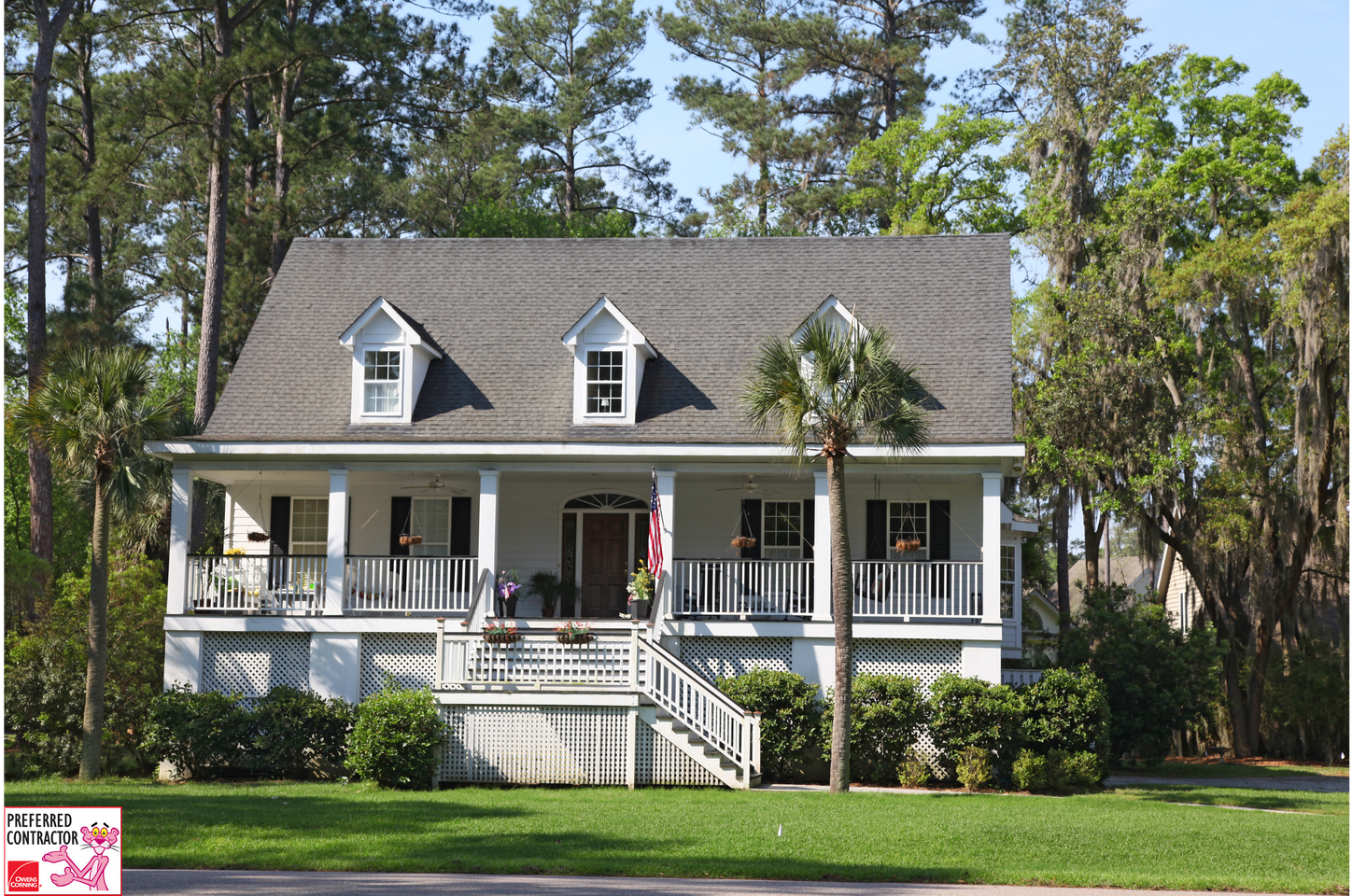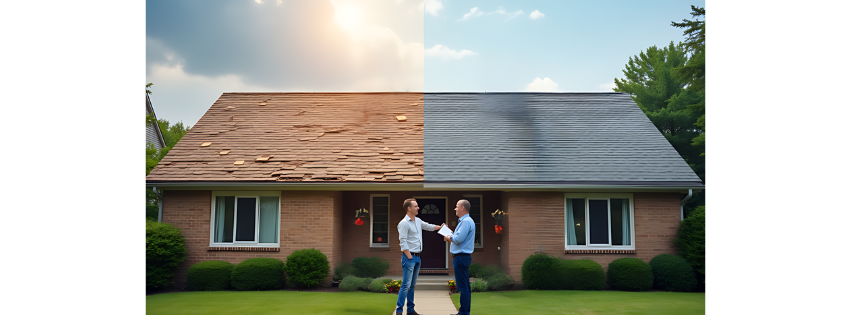How Proper Roof Ventilation Can Save You Money
Discover the essential benefits of roof ventilation and how it can reduce energy costs, prevent damage, and enhance the longevity of your home.

Proper roof ventilation is crucial for maintaining the health and efficiency of your home. It can save you money by reducing energy costs, preventing damage, and extending the lifespan of your roof. In this blog, we’ll explore why roof ventilation matters and how it can lead to significant savings.
What is Roof Ventilation? Roof ventilation involves the exchange of air through various components such as ridge vents, soffit vents, and gable vents. This system allows hot, humid air to escape from the attic, replacing it with cooler, drier air from the outside.
Key Benefits of Roof Ventilation
- Prevents Moisture Build-Up Adequate ventilation prevents moisture accumulation, which can lead to mold and mildew growth. Mold not only poses health risks but can also damage the structural integrity of your home.
- Extends Roof Lifespan By preventing heat and moisture build-up, ventilation reduces the stress on your roofing materials. This helps to avoid premature deterioration of shingles and other components, saving you from costly repairs or replacements.
- Improves Energy Efficiency Effective roof ventilation maintains a balanced temperature in your attic, reducing the load on your HVAC system. This leads to lower energy bills as your system doesn’t have to work as hard to maintain a comfortable indoor temperature.
- Enhances Indoor Air Quality Proper ventilation helps to expel pollutants and maintain healthier indoor air quality. This is particularly important for homes in areas with high humidity or pollution levels.
Types of Roof Ventilation Systems
- Ridge Vents Installed along the peak of the roof, provide continuous airflow. They are aesthetically pleasing and highly effective when paired with soffit vents.
- Soffit Vents Located under the eaves, allow cool air to enter the attic. When combined with ridge vents, they create a balanced ventilation system that effectively regulates attic temperature.
- Gable Vents are placed on the exterior walls of the attic. They are easy to install and can significantly improve air circulation when used with other ventilation methods.
- Turbine Vents, also known as whirlybirds, use wind power to create airflow. They are efficient at removing hot air and moisture and require no electricity, making them a cost-effective option.
Common Roof Ventilation Issues and Solutions
Blocked Vents: Debris and insulation can block vents, reducing their effectiveness. Regular cleaning and inspection can prevent this issue.
Improper Installation: Incorrect installation can lead to inefficient ventilation. Always hire experienced professionals to ensure proper setup.
Weather Damage: Storms and extreme weather can damage vents. Inspect your roof after severe weather and repair any damage promptly to maintain proper ventilation.
How to Ensure Proper Roof Ventilation
- Roof Inspection Tips: Regularly inspect your roof ventilation system to ensure it is functioning correctly. Look for signs of blockages, damage, or inadequate airflow.
- Maintenance Practices: Keep your vents clean and free of debris. Ensure that insulation does not obstruct airflow, which can compromise the efficiency of your ventilation system.
- Choosing the Right Contractor Hiring a licensed roofing contractor is crucial for proper installation and maintenance of your roof ventilation system. A professional can help you select the right type of ventilation for your home and ensure it is installed correctly.
Benefits of Hiring a Licensed Roofing Contractor
- Expertise and Knowledge: Licensed roofing contractors possess the necessary training and experience to handle various roofing tasks. They are well-versed in the latest industry standards and building codes, ensuring that your roof is installed or repaired correctly.
- Quality Workmanship: A licensed contractor adheres to high standards of workmanship. They use quality materials and employ best practices to ensure the longevity and durability of your roof. This reduces the likelihood of future problems and costly repairs.
- Safety: Roofing can be hazardous, and licensed contractors are trained in safety protocols to prevent accidents. They have the appropriate safety gear and equipment to carry out the job safely, protecting both themselves and your property.
- Insurance and Liability: Licensed contractors carry insurance that protects you from liability in case of accidents or damage during the roofing project. This means you won’t be held financially responsible for any mishaps that occur.
- Warranty and Guarantees: A licensed roofing contractor typically offers warranties on their work and the materials they use. This provides peace of mind, knowing that any issues that arise post-installation will be addressed at no additional cost to you.
- Regulatory Compliance: Licensed contractors comply with local building regulations and permit requirements. This ensures that your roofing project is legal and meets all safety and quality standards.
Investing in proper roof ventilation is a smart move for any homeowner. It not only improves energy efficiency and indoor air quality but also extends the lifespan of your roof, ultimately saving you money. Contact a licensed roofing contractor in Salisbury, NC, to assess and enhance your roof ventilation system today.
What happens if my roof is not properly ventilated?
Inadequate ventilation can lead to moisture build-up, mold growth, and premature roof deterioration.
How often should I check my roof ventilation?
Inspect your roof ventilation system at least once a year, and after any major weather events.
Can I install roof ventilation systems myself?
While some ventilation systems can be DIY projects, it’s best to hire a licensed roofing contractor for proper installation and maintenance.
The Following References Combined with Hardline Roofing's Expertise Ensure All Details Outlined In This Post are Up to Date & Accurate
- "5 Roof Vent Types To Consider For Your Roof In 2023" - Build with Kraft Build With Kraft
- "7 Roof Vent Types For A Longer-Lasting Roof (2024)" - Springfield Roofing Springfield Roofing
- "5 Expert Tips For Effective Roof Ventilation (2024 Update)" - GreenTek GreenTek
- "The Best Types of Vents for Your Roof (2024)" - Today's Homeowner Today's Homeowner
- "The Most Common Types of Roof Vents for Attic Ventilation" - GAF GAF
These sources provided valuable information on the types and benefits of roof ventilation, as well as expert tips for maintaining an efficient ventilation system.
Connect With us On Facebook!



